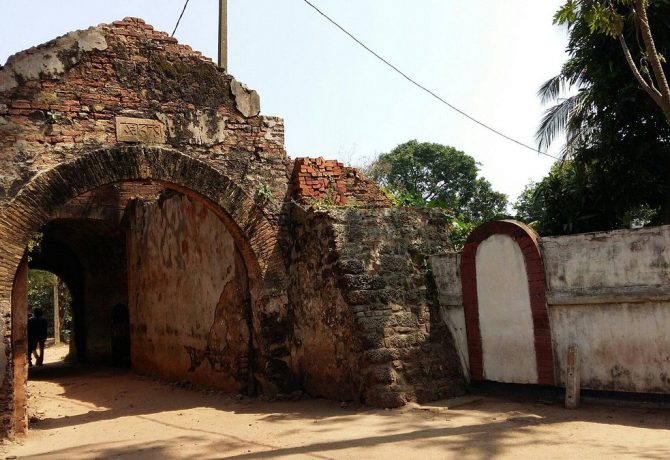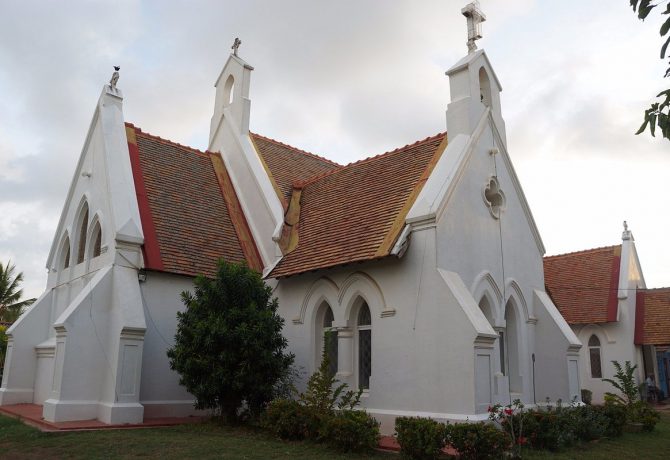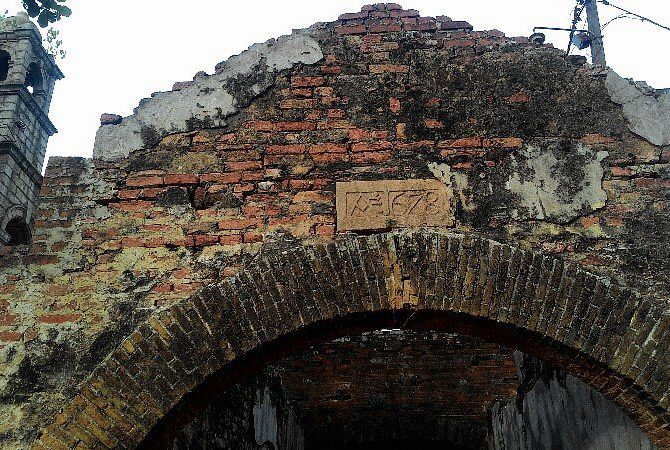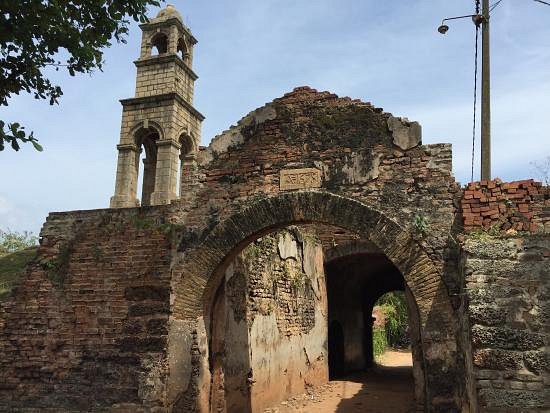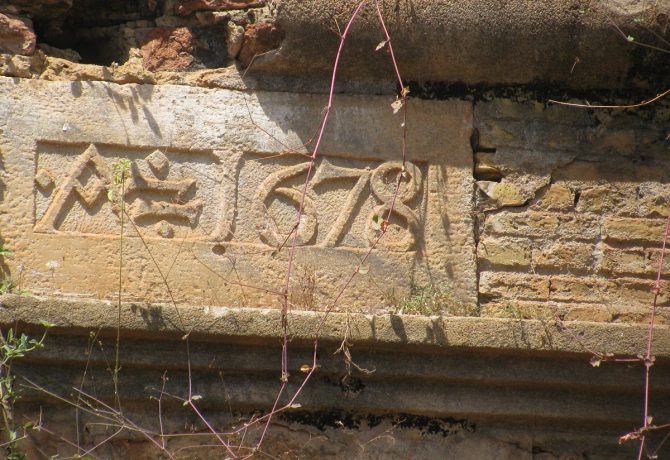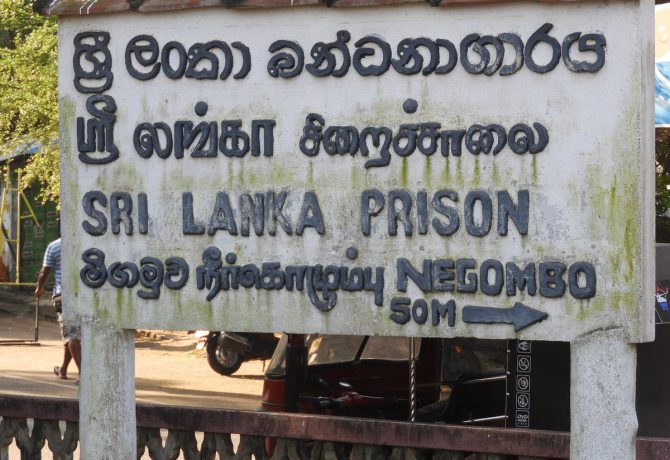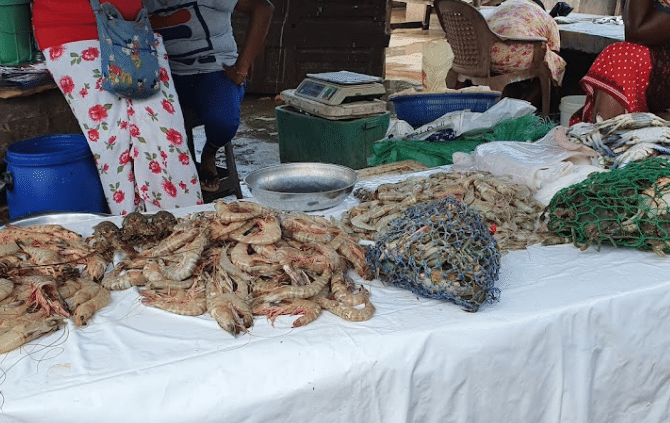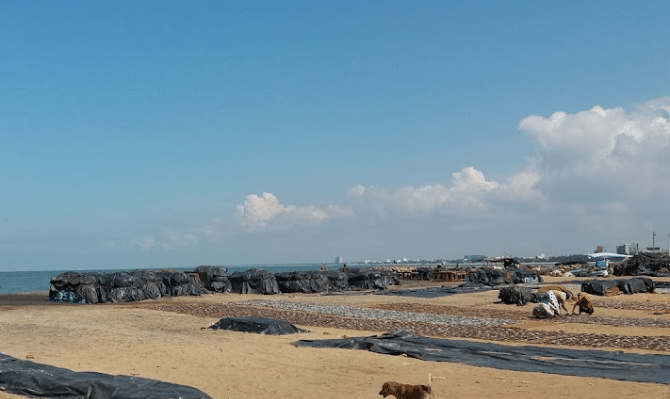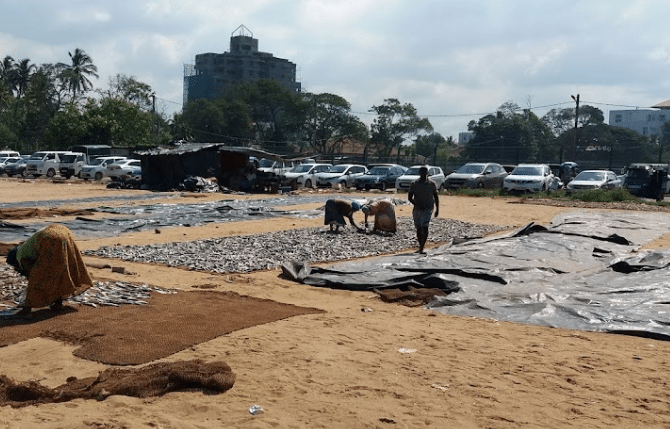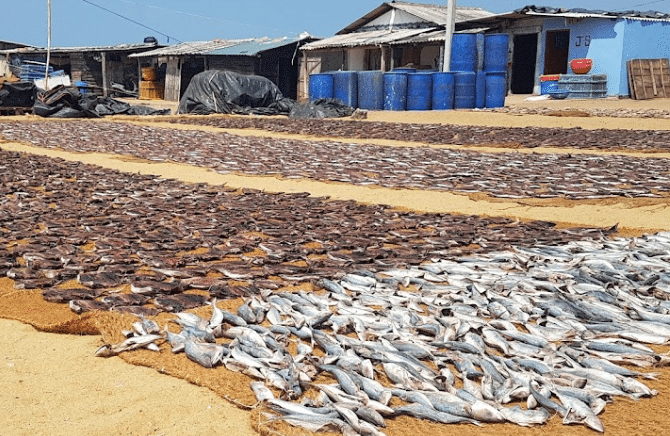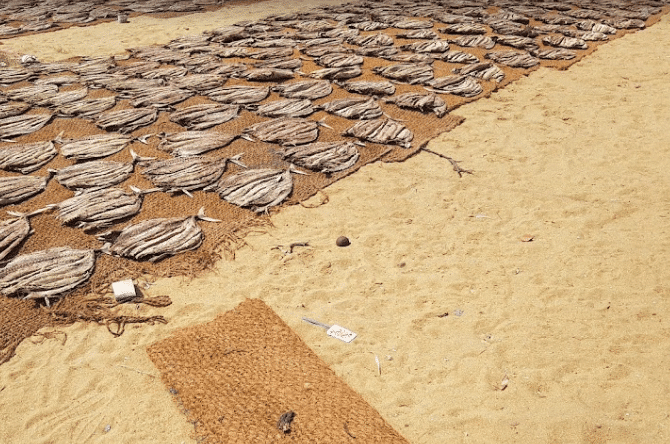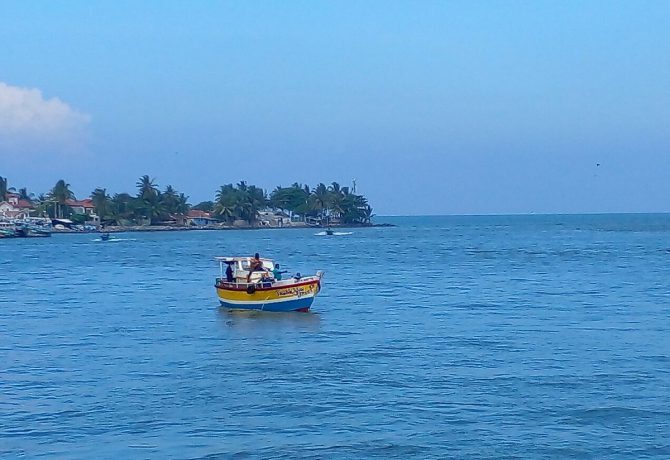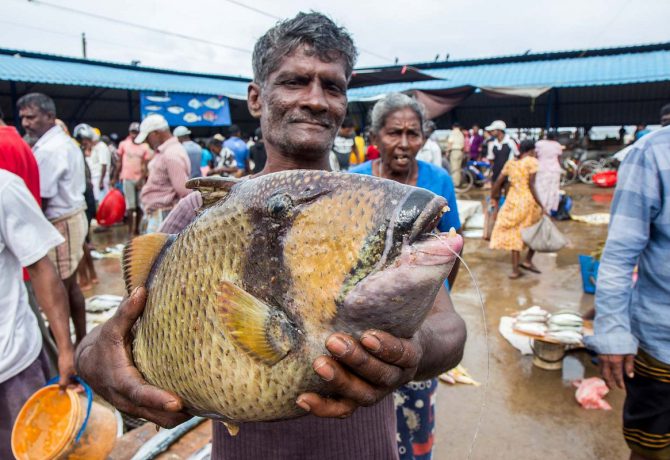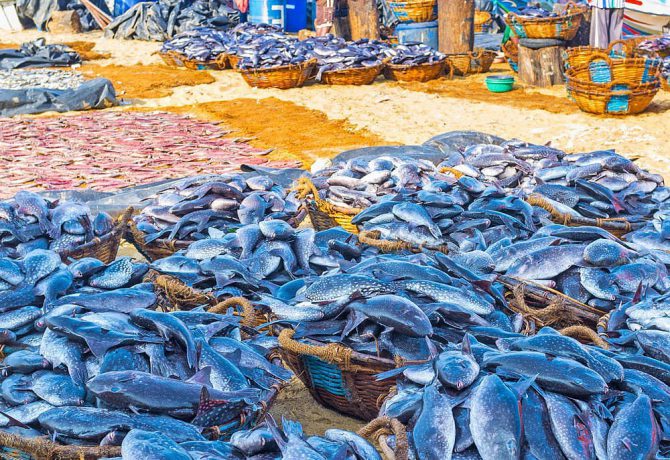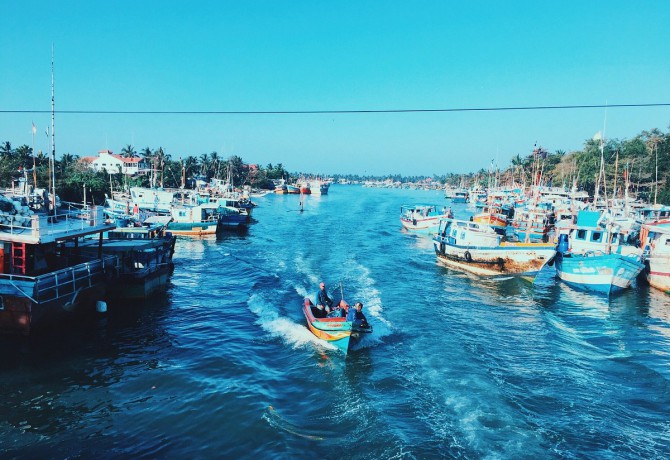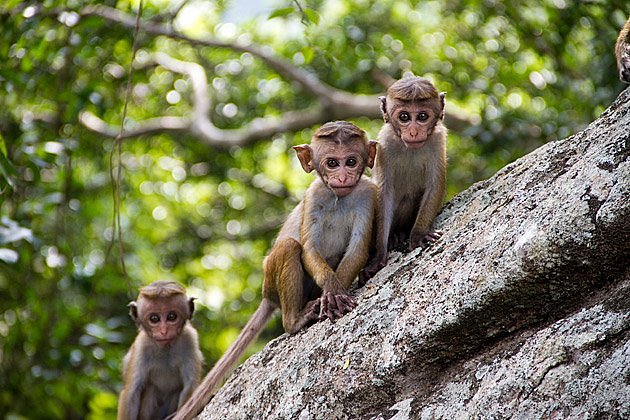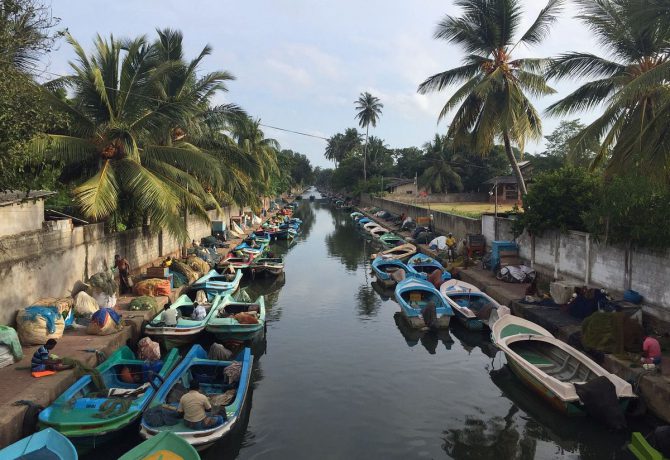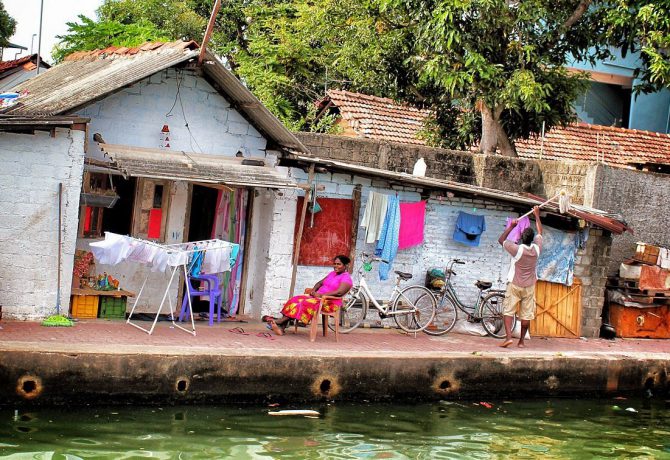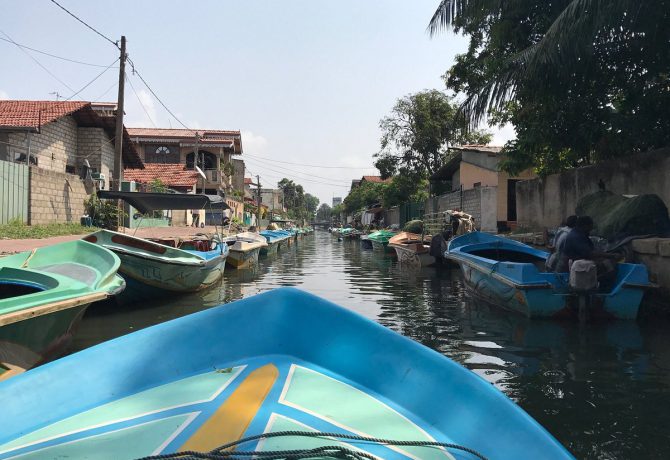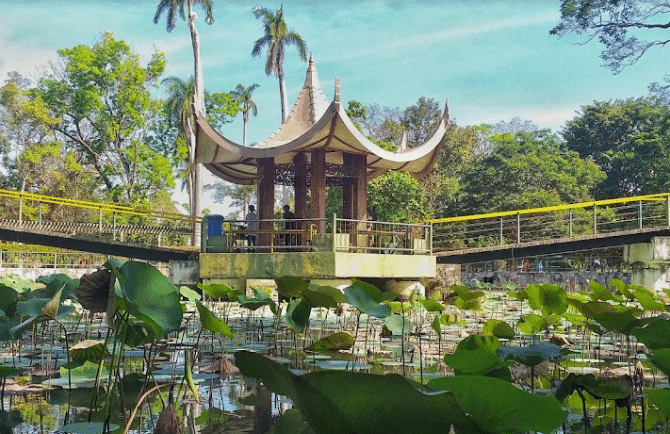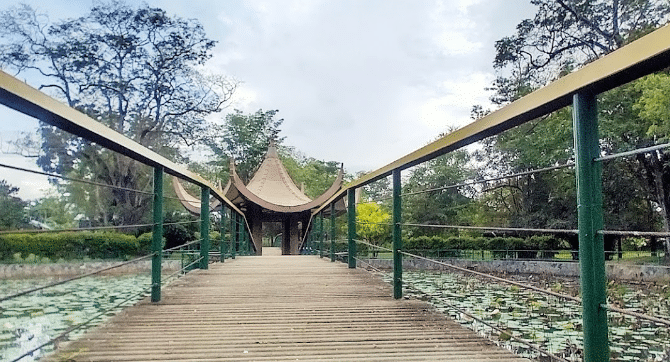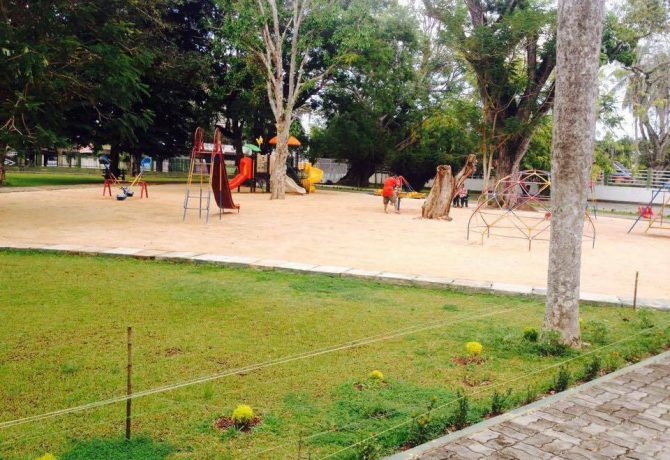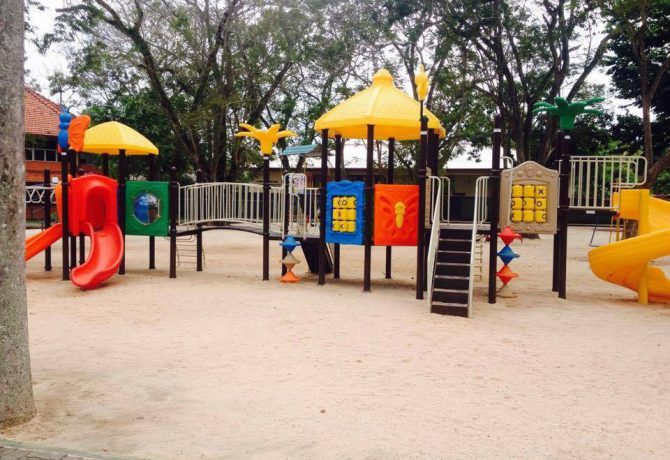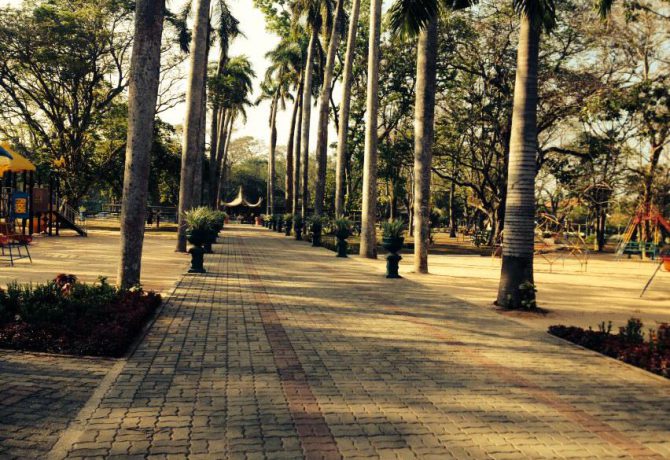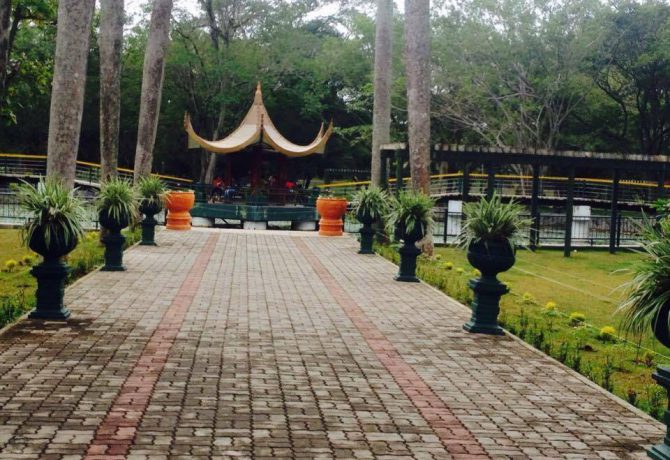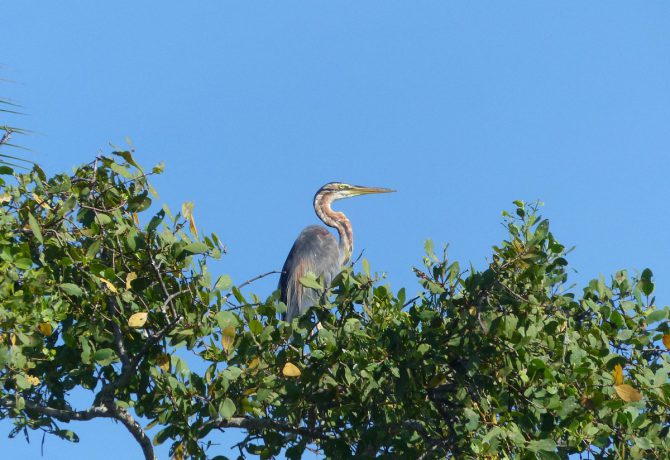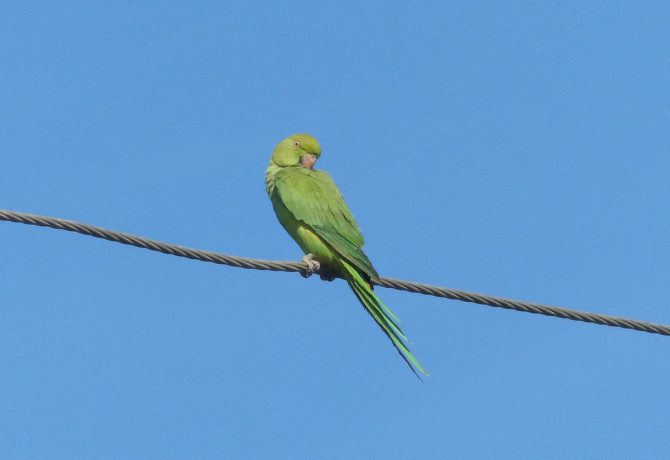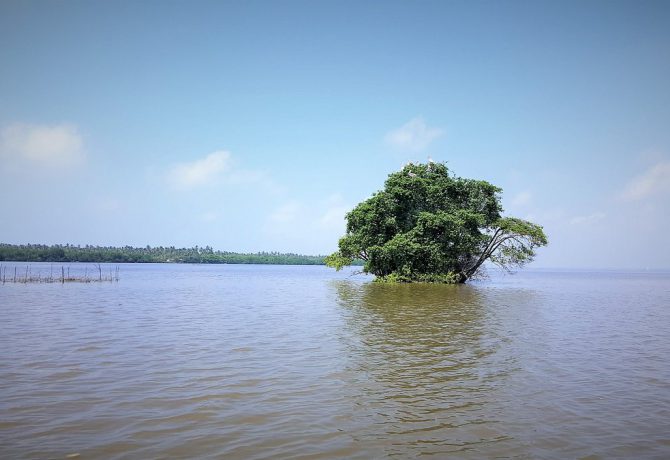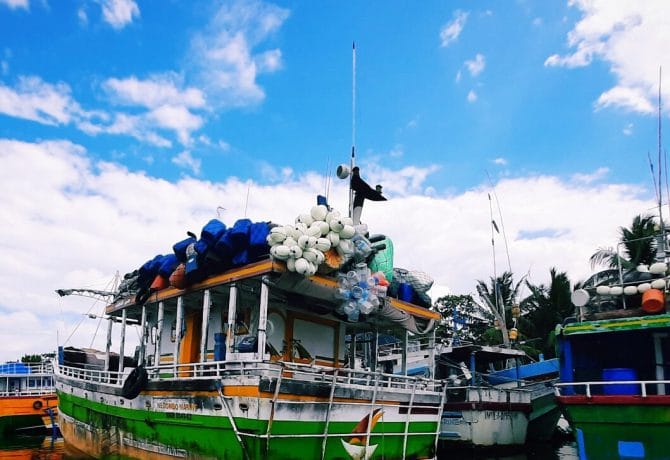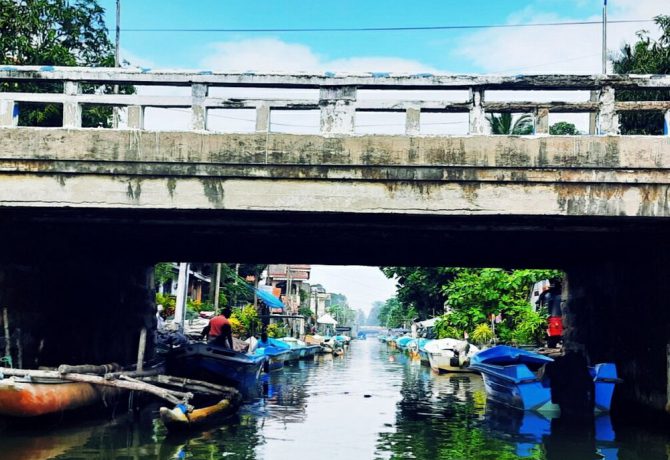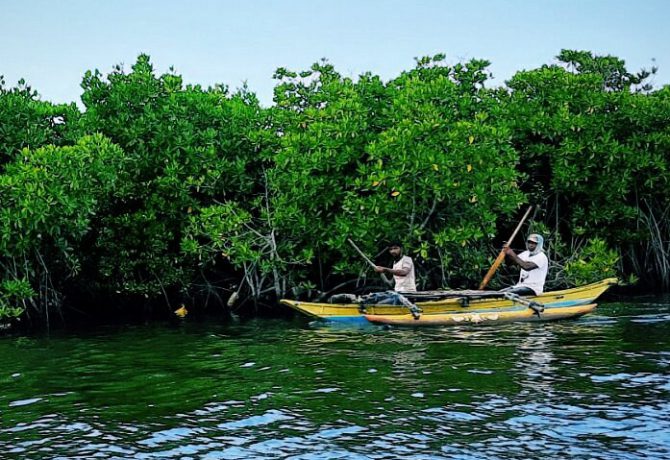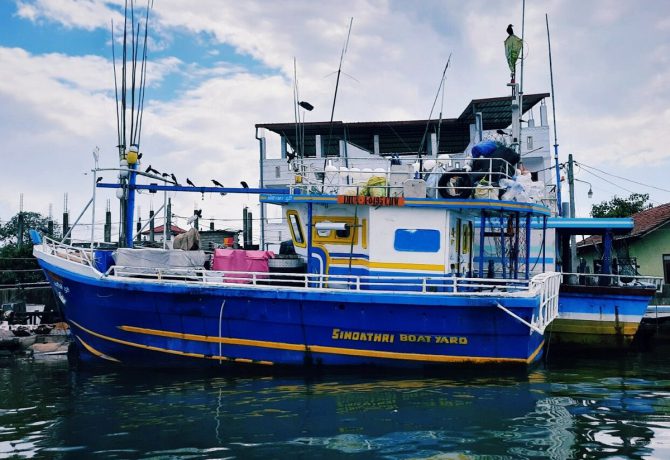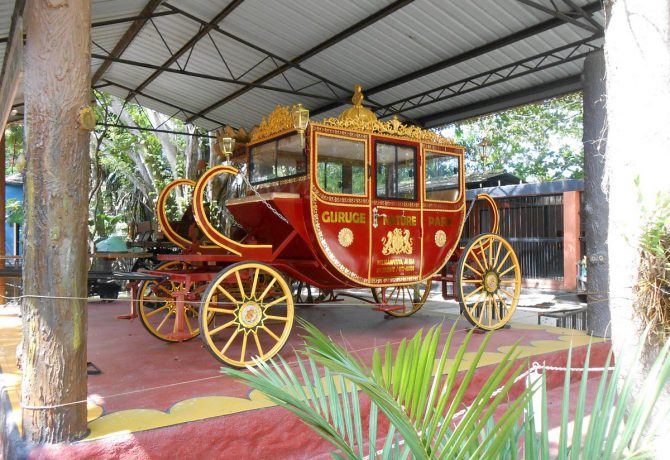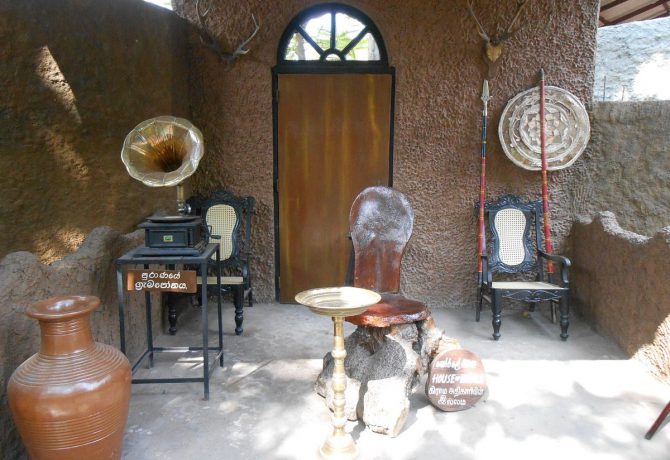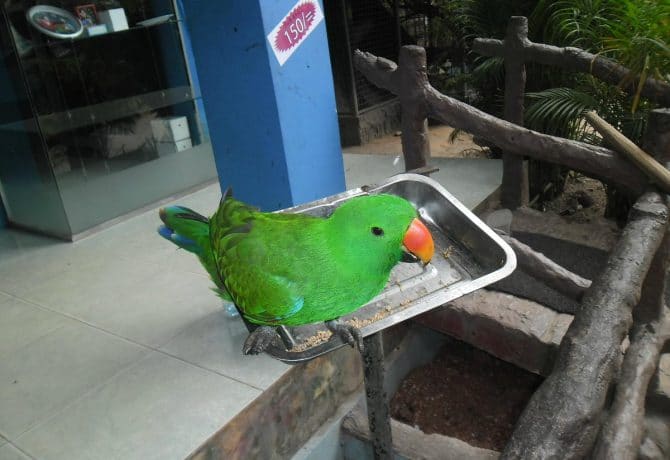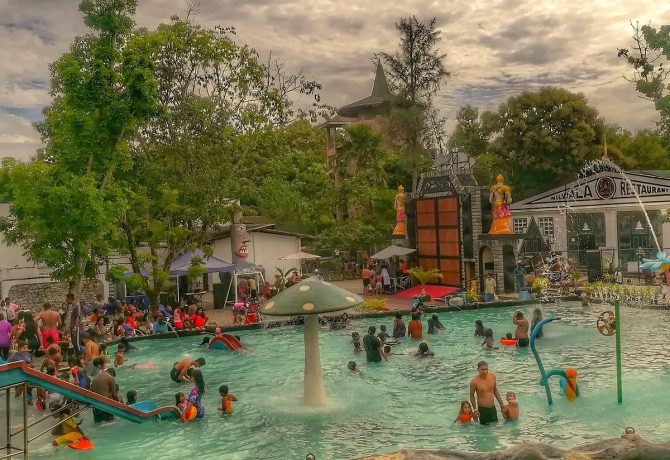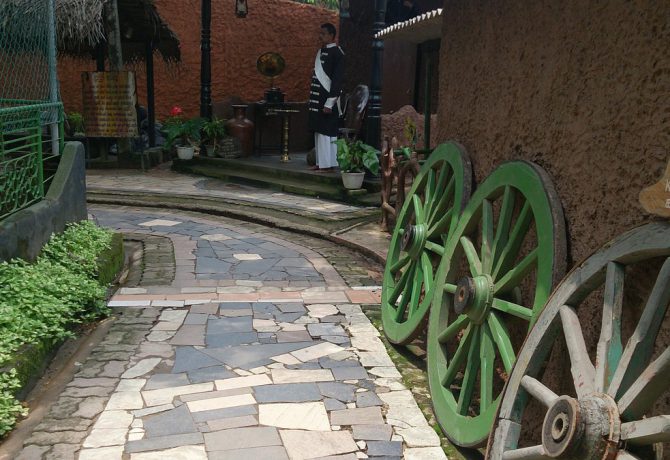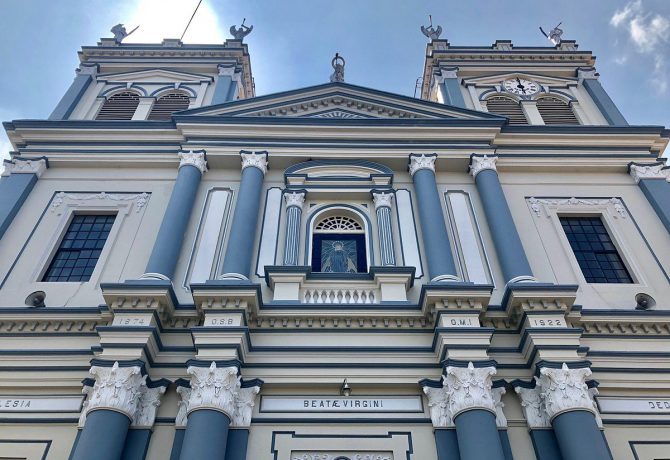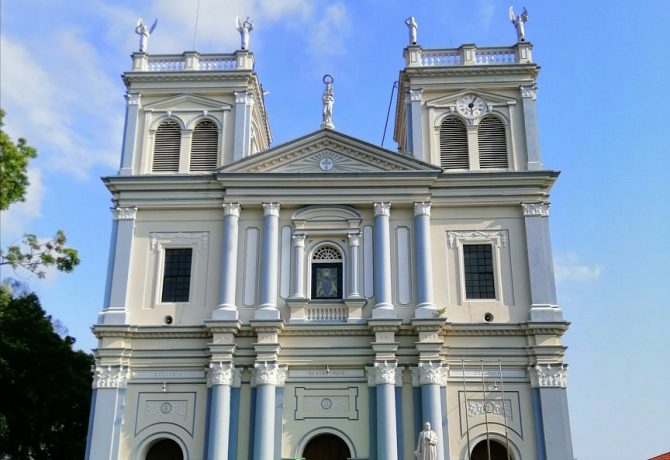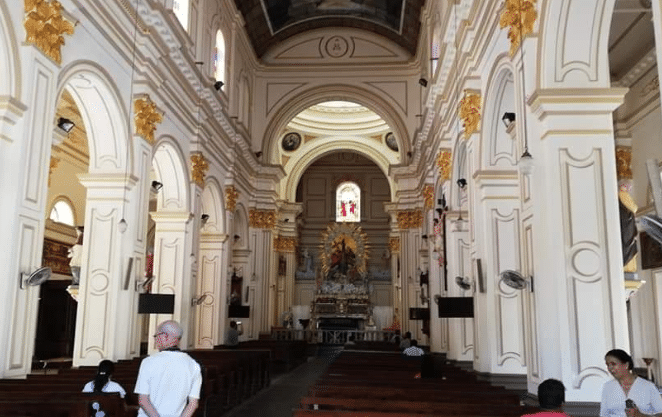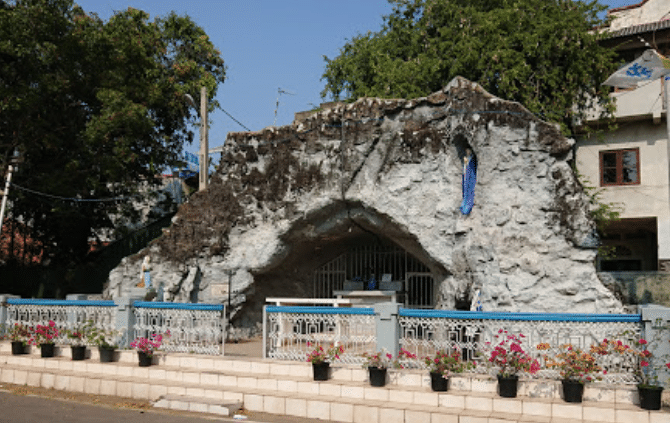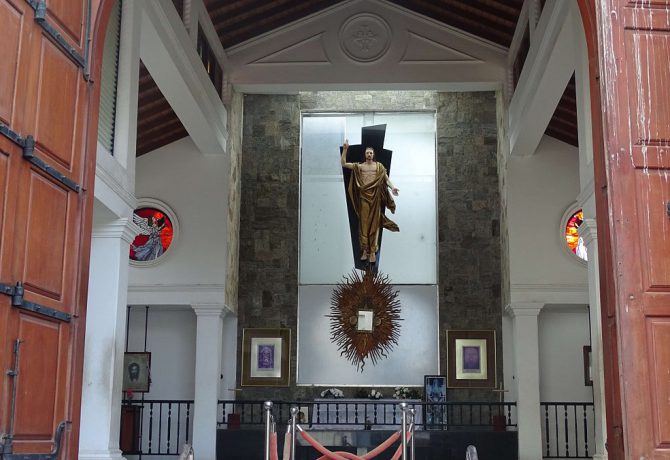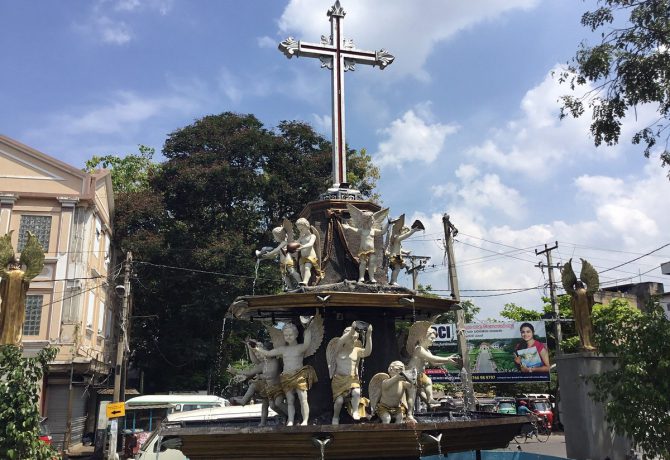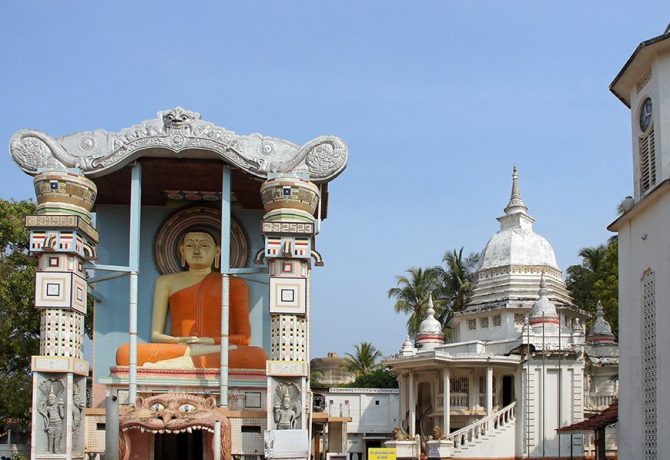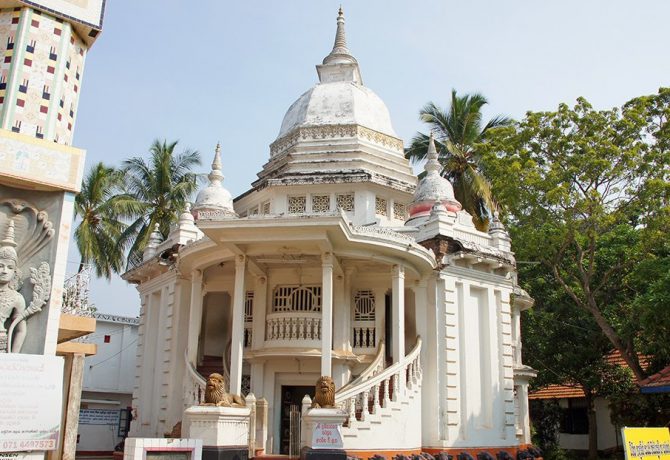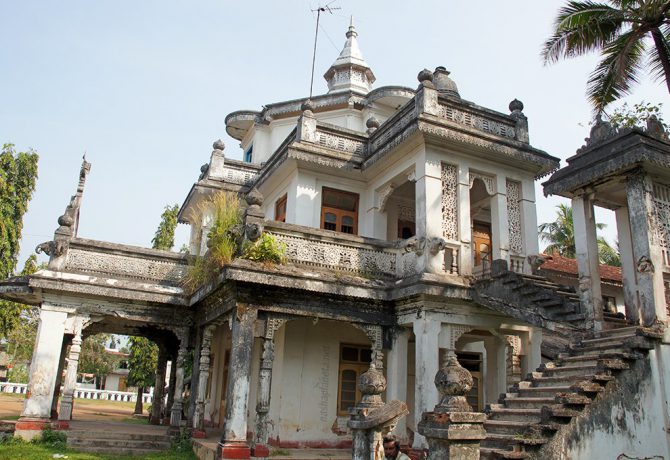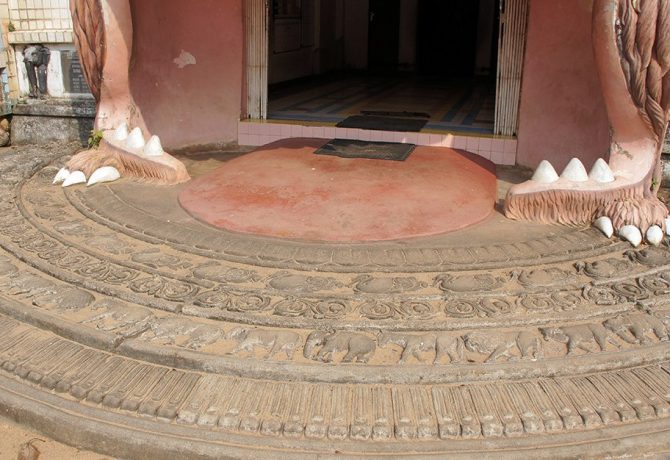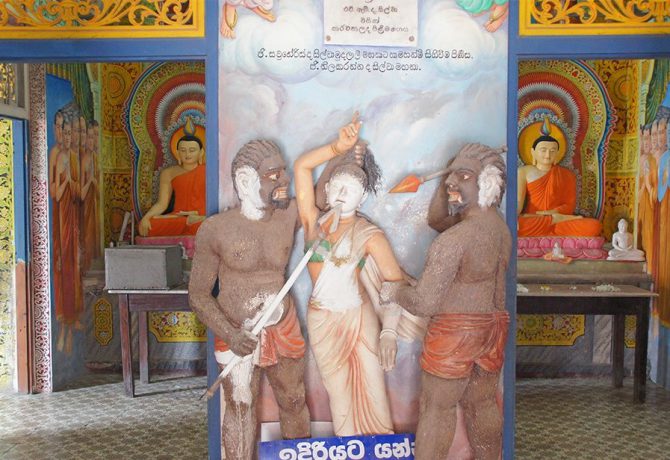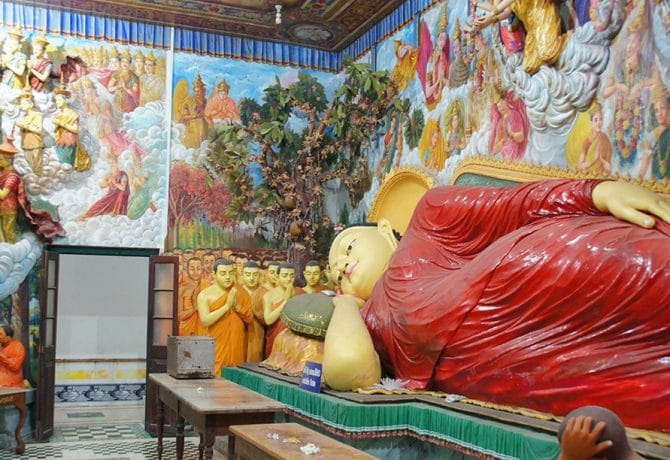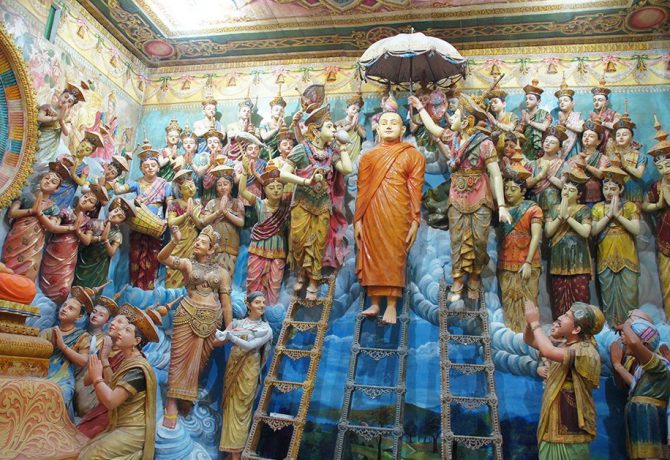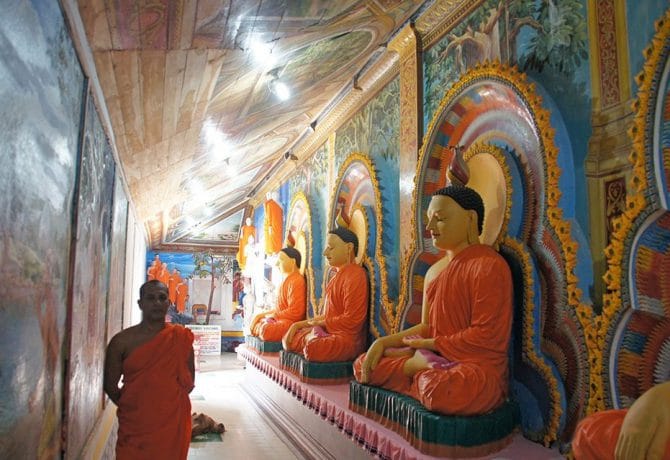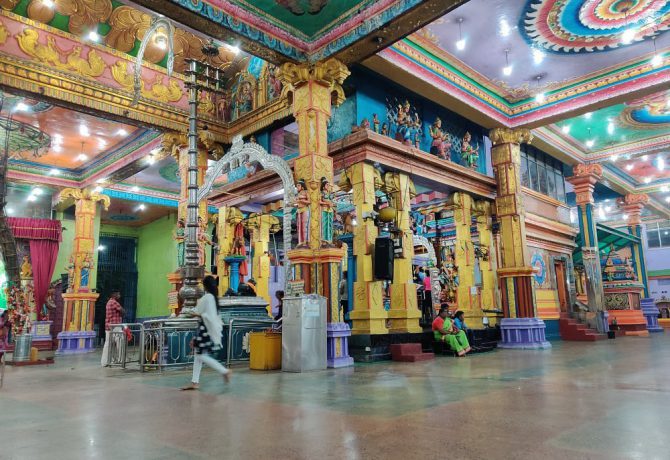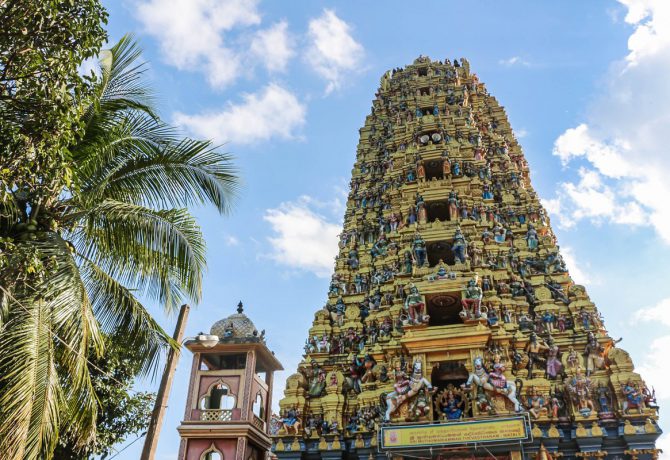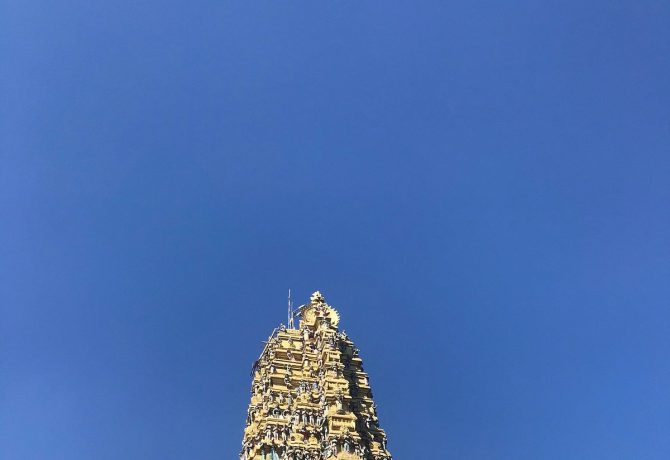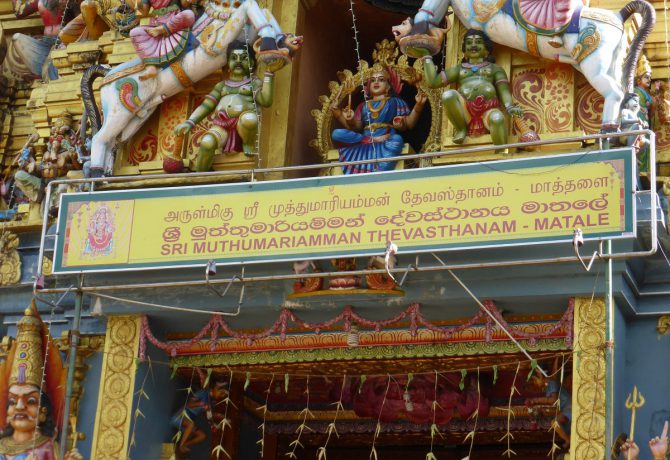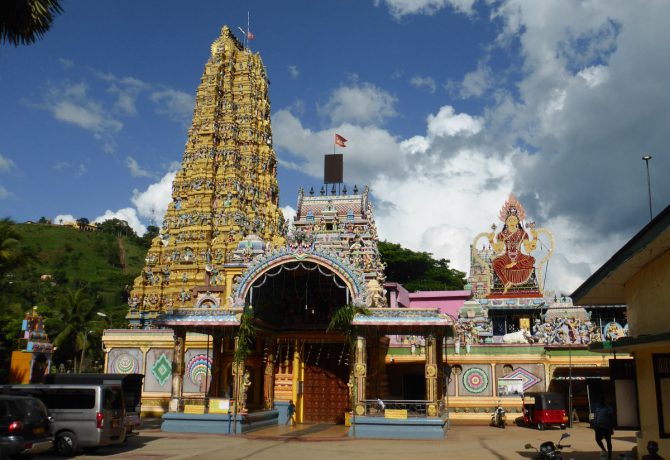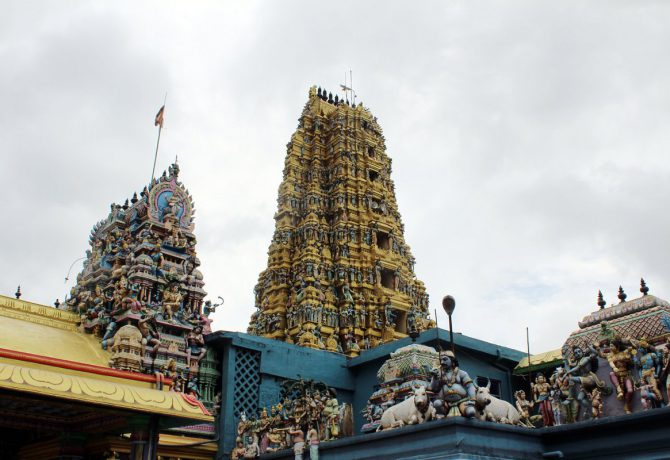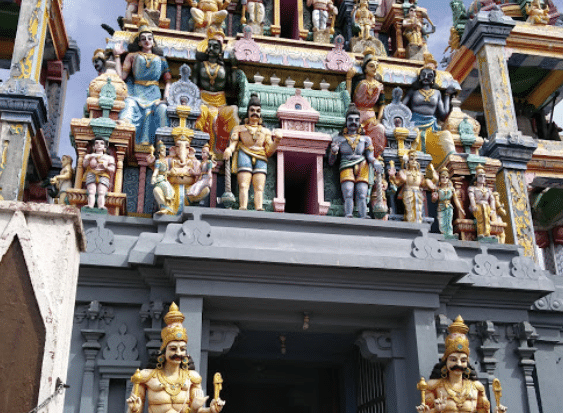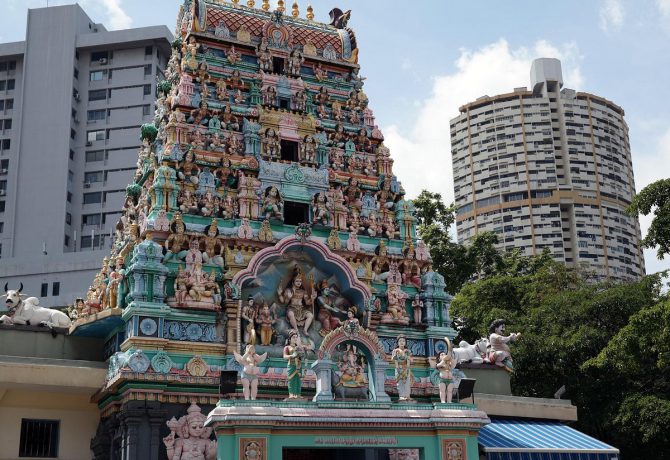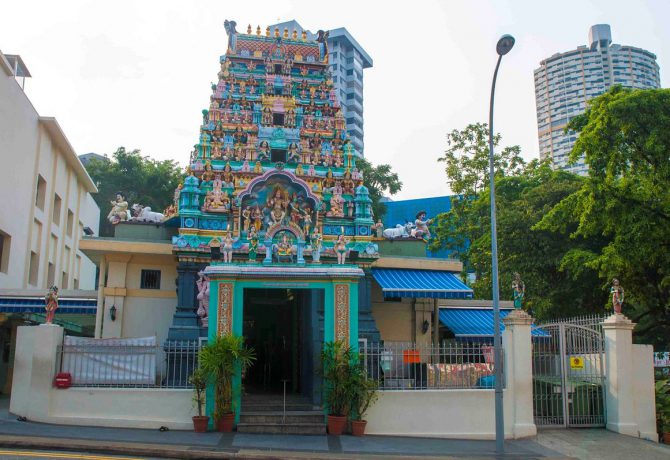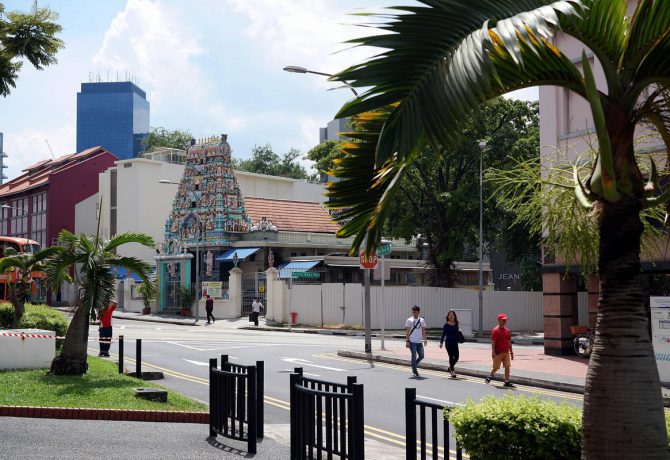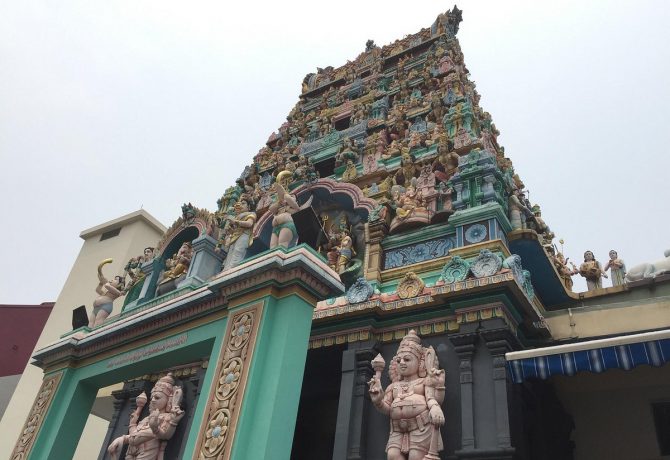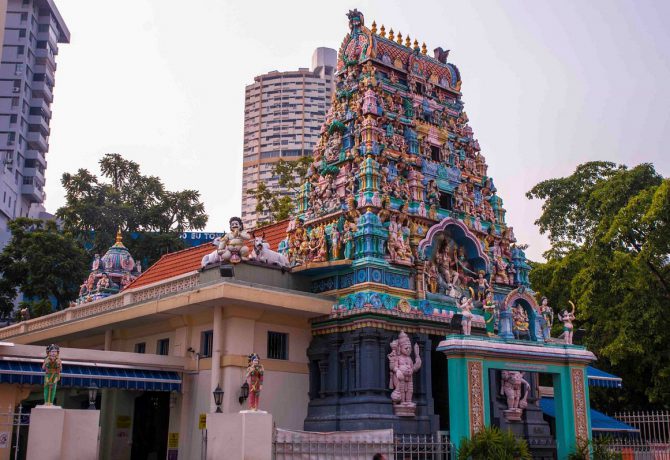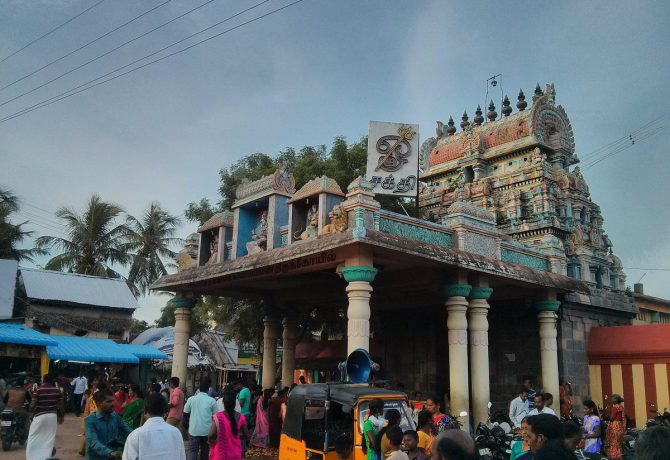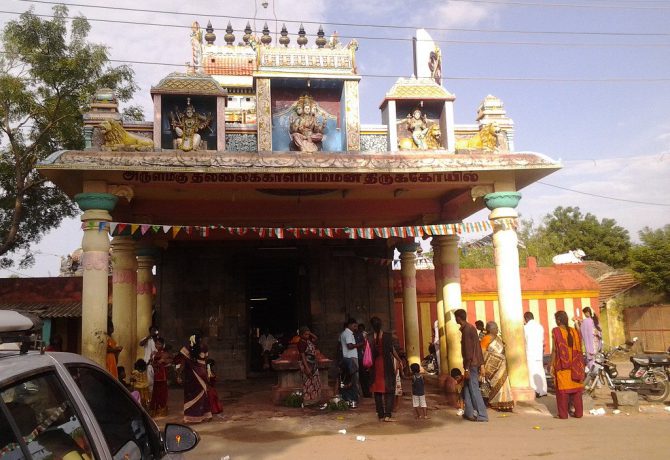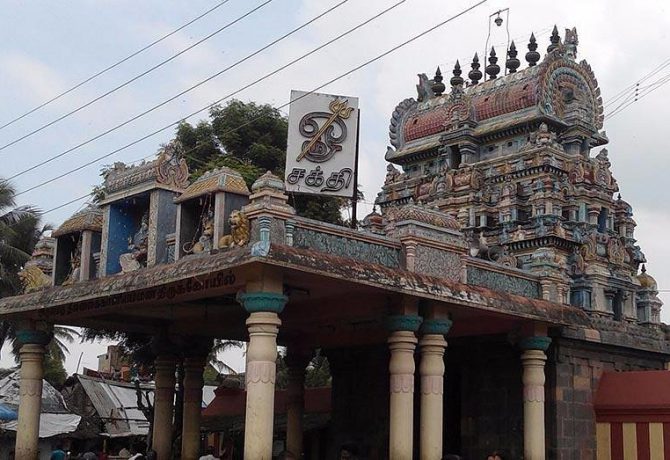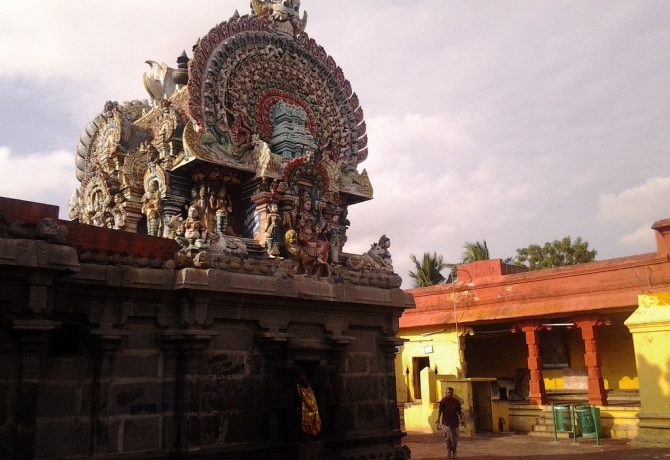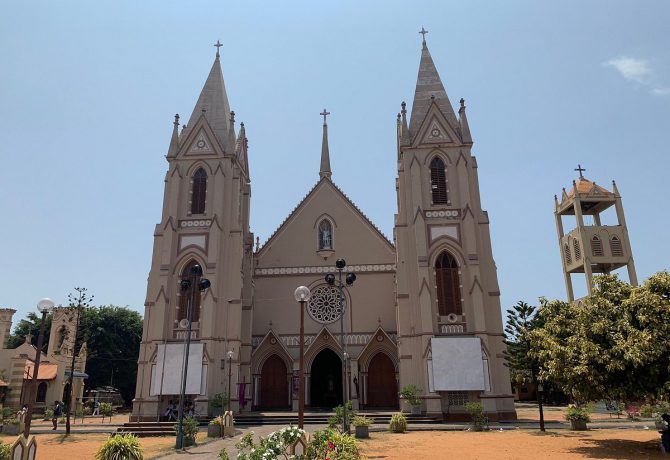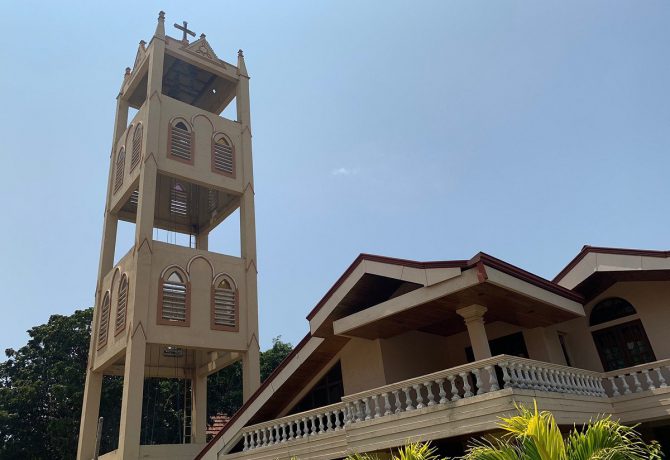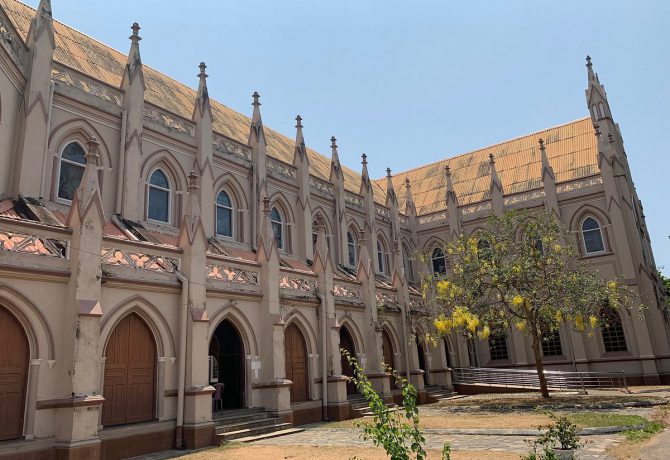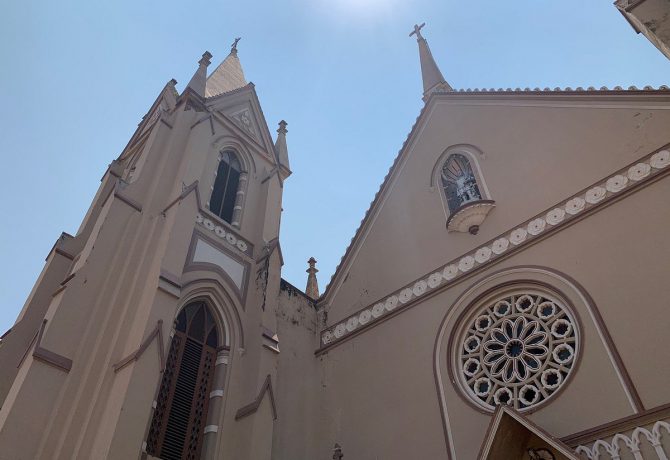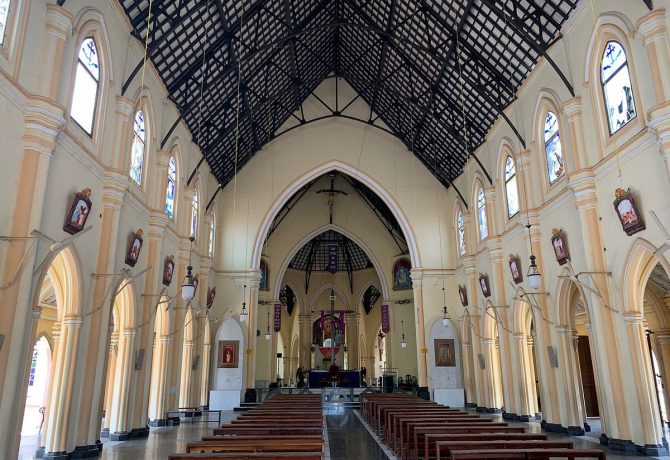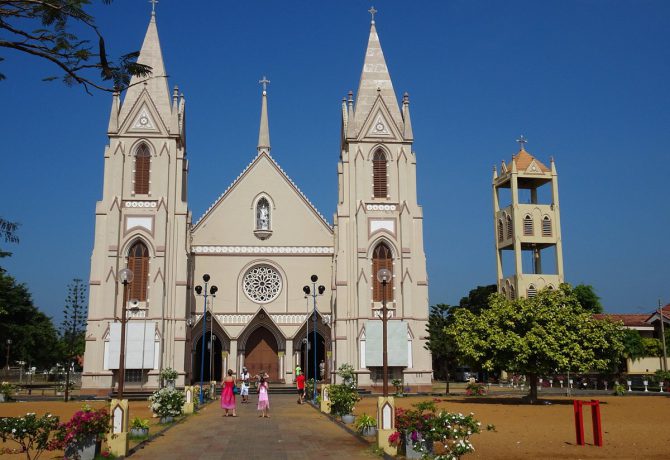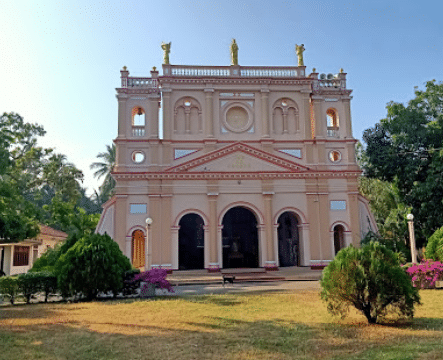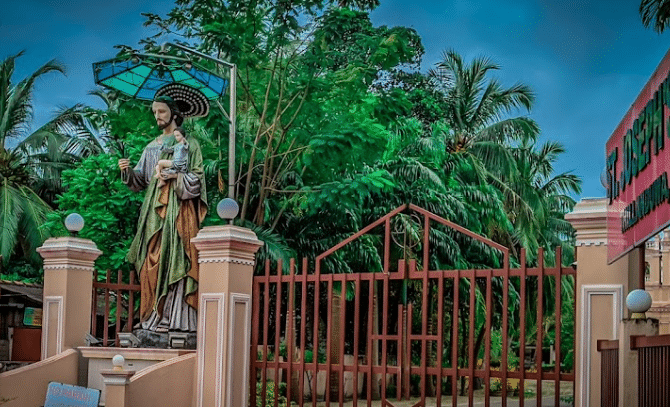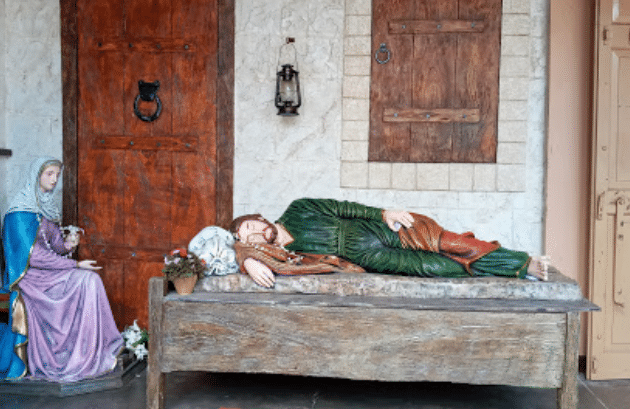Negombo is a town of about 65,000 people, located 37 km north of Colombo, located 7 km from Bandaranaike International Airport, opposite the Negombo Lagoon. Negombo has a small port, and the city’s economy is mostly based on tourism (hotels also bring big profits to the city) and the centuries-old fishing industry. But the indigenous people also produce cinnamon, pottery and copper products.
- 1 Dutch Fort Negombo
- 2 Fish Market
- 3 Dutch canal / Hamilton canal
- 4 Rajapakse Park
- 5 Negombo Lagoon
- 6 Amusement Park (Guruge Park)
- 7 St. Mary Church
- 8 Agurukaramulla Temple (Bodhirajarama Maha Viharaya)
- 9 Sri Muthu Mari Amman Temple
- 10 Sri Sithi Vinayagar Temple
- 11 Kali Amman Temple
- 12 St. Sebastian Church
- 13 St. Joseph Curch Church
- 14 Attractions Negombo on map
Dutch Fort Negombo
One of the main attractions of Negombo is the Dutch fort, which was built in 1672. Initially, the fort was poorly structured, so it did not live to our times as a whole.
Initially, the fort exemplary performed its defensive function, but at the end of the XVIII century, after a long siege, the Dutch Ford Negombo was captured by English soldiers. Firmly established in the city of Negombo, they rushed south, with the aim of also capturing Colombo.
At the end of the XIX century, the conquerors decided to destroy the fortress and build a prison instead. It is she who has survived to our times.
Inspection of the Dutch Fort Negombo can only be carried out from the outside. To do this, you need to climb to the top of the hill. The Dutch fort negombo is surrounded by water on three sides, which made it at all times as impregnable as possible.
Currently, only a few remnants of Dutch memory remain, such as the entrance to the Eastern Wall and the mounds on the northern and southern parts, on which formidable bastions once towered. The path that now leads to the main gate, made in the form of an arch, passed through a deep moat, which, if necessary, was blocked by a drawbridge. Unfortunately, neither the bridge nor the road has been preserved. Between the two ancient bastions there are entrance gates, on rectangular granite slabs embedded above the arch, the date of their construction is indicated: 1678. Also available for inspection is the clock tower, built in 1899 in honor of the 80th anniversary of the Queen.
Fish Market
This promising fish market, which often baffles tourists with a not very pleasant smell, is best visited in the early morning to buy the freshest seafood. The fish market is open from 7 a.m. to 10 p.m. People with a weak stomach are better off skipping this spot.
At the fish market, everything works very simply: on the one hand, dried fish is sold, and on the other – fresh. Even if you do not plan to buy fish, it is worth at least looking at the Negombo fish market to make beautiful photos of fishermen, sellers, buyers and, of course, the fish that is put up for sale. You can also stroll through the fish market in the direction of the beach, here thousands of fish dry out in the open area.
Behind the beach is also the main road to Negombo, where there are numerous restaurants, cafes or souvenir shops. Hotels here are more expensive and luxurious than the fish market itself.
The whole city revolves around fishing; it is Negombo’s biggest source of income. Fishermen enter the water very early and return around 06:00. The fish market sells all the catch, but most of the fish is dried.
Dutch canal / Hamilton canal
The Hamilton Canal is a waterway passing through the centre of Negombo. The length of the canal from Colombo to Negombo is 1 kilometer.
According to legend, it was King Kotte Viraparakramabahu VIII who first began the construction of this canal for the transportation of goods, but did not have time to finish it. Later, the Dutch began to build the rest of the canal, but construction was slowed down due to the influx of sea water. As a result, the Construction was completed by the British.
The canal was rebuilt in the English period. Its development began in 1802 and was completed in 1804. The canal was later renamed the Hamilton Canal as it was finally erected under the direction of Gavin Hamilton, a Tax and Trade Officer of Sri Lanka.
Initially, the Dutch Canal was built for the Dutch to use it to transport their lucrative goods, such as cinnamon, to Colombo and abroad. Today, this canal is still very useful to Negombo fishermen and is also a popular tourist destination.
The canal was also used to anchor fishing boats. Until the middle of the last century, goods from Colombo were transported by ferry along this canal. Unfortunately, the Hamilton Canal, one of the most beautiful places in Negombo, has now turned into a dirty place.
Rajapakse Park
Rajapaksa Park is located in Rukmani Devi Mawatha, a residential area near downtown Negombo. The land was donated by the Rukmani Devi family, the “Nightingale of Sri Lanka”, after her tragic death in 1978. Then this park became known as Rukmani Devi Park.
In 2014, the government paid for its renovation and it was renamed Rajapaksa Park. Today it is a pleasant place where you can escape from the bustle of the city, and the only public place, except for the beach, for walking and relaxing.
Rajapaksa Park has two playgrounds with equipment for young children, making it a popular destination for families. One corner of Rajapaksa Park houses a children’s library and the other is the Rukmani Devi Performing Arts Centre.
Informal planting of trees and shrubs has created a cool green oasis, and a path lined with palm trees leads to the central part of Rajapaksa Park. Here, a pond with lilies with a small Gazebo in the Japanese style in the center can be reached by the bridge from either side. Beautiful furnishings that can be rented for a wedding photo shoot.
Schoolchildren love to come to Rajapaksa Park after school to chat with classmates. It is also a quiet place for young couples who want to spend time together. And during the holidays, entire families gather in Rajapaksa Park to chat and play with their children.
A small café in Rajapaksa Park offers hot and cold drinks and a selection of light snacks. Friendly security staff patrol the park during its opening hours, creating a safe environment for everyone, and gardeners work hard to keep it clean and tidy.
Negombo is known not only for the sights that are located directly in the city itself, but also for places in the district. To visit the following attractions, it is better to book hotels nearby in advance. Surroundings:
Negombo Lagoon
The negombo coastal wetland ecosystem, covering an area of 6232 square meters, is located on the west coast of Sri Lanka. About 3500 fishermen work in the Negombo lagoon every year and the anchors of about 2500 fishing vessels are lowered. About 15,000 fishing families live in Negombo, so the environment of Negombo Lagoon has functioned for centuries as a center of marine fisheries of national importance.
In addition, the lagoon is an important ecosystem that is of great ecological and economic importance. Negombo Lagoon is one of the lagoons of Sri Lanka and is especially protected because of the rich mangrove vegetation. Negombo Lagoon has many small mangrove islands. This mangrove lagoon is Negombo’s oxygen factory.
This mangrove ecosystem provides habitat for rare birds, reptiles and fish. Mangrove forests also protect the Negombo Lagoon from coastal erosion. Other special ecosystems endemic to Negombo Lagoon are seagrass ecosystems. This unique ecosystem is also highly regarded for the development of tourism in Sri Lanka.
The main reason for the settlement of Negombo in ancient times was the widespread lagoon system at Negombo. The main reason for this settlement is that the lagoon provides a livelihood even during the rainy season.
Amusement Park (Guruge Park)
Guruge Park is the first theme park in the country that not only has fun and exciting rides, but also tells the story of the country’s rich history, dating back to 547 BC.
The amusement park is known for its many attractions, especially the Mayan Water Park, which meets international standards. Guruge Park has a Jurassic Park section where you can go on an epic adventure and step straight into the lost world of dinosaurs. There are replicas of velociraptors, tyrannosaurs, alamosaurs, and many others with realistic light and sound effects that make dinosaurs come to life. Also in this amusement park there is an unlimited number of attractions and games indoors. Guruga Park is open 365 days a year.
The water park has magnificent light shows that fascinate the audience. Guests can enjoy water sports and admire the beautiful architecture of the water park with its bright lights, beautiful flora and fountains.
The amusement park even has a reconstruction of an ancient Sri Lankan village that houses several ancient hunting tools. The Gem Museum in the amusement park houses several ancient gems and coins from the time of the kings. There are also several statues, ancient artifacts, and collectibles. People can take a closer look at what they usually see in books, newspapers, or on television. The museum is a great historical and cultural heritage of Sri Lanka.
The population of Negombo is represented by people of different faiths, so on its territory there are many temples of different religions. Most of them are active, so you should visit them in suitable clothes and without suitcases (for this you can book hotels in Negombo). Churches and temples:
St. Mary Church
Located on negombo’s main street, this church is considered sri lanka’s largest cathedral. The Church of St. Mary is popularly known as the Street Church. Construction began in 1874, and was completed only in 1922.
In the history of this church of St. Mary is hidden the great work of French architects. And the paintings belong to the great artists of that time. Catholics believe that St. Mary’s Church is a decoration of Negombo.
During the construction of the Church of St. Mary, new classical European styles were used – Gothic and Baroque. The Church of St. Mary has a high roof and arches. Marble statues, ceiling paintings and wall decorations add to the uniqueness of the Church of St. Mary. The ceiling is decorated with events from the life of Jesus. In the upper part of the walls there are statues of saints. The stained glass windows of St. Mary’s Church also have beautiful patterns.
St. Mary’s Cathedral is considered one of the largest Catholic churches. There are more than 20 such churches in Negombo, which confirms the rich historical past of the period of Portuguese and Dutch influence. The Church of St. Mary stands out for its simple architectural ensemble, beautiful frescoes and figures that adorned the interior of the cathedral.
Agurukaramulla Temple (Bodhirajarama Maha Viharaya)
The Temple of Angurukaramulla Bodhirajarama in Negombo is not an archaeological site, but has more than 100 years of history. The area was named Angurucaramulla because of the people who mined coal from coconut shells.
The Buddhist temple of Angunukaramulla (or Agurukaramulla Pansala) is a majestic religious building and, like the Catholic Cathedral of St. Mary, is considered one of the most remarkable places in Sri Lanka. The temple of Angurukaramulla is located twenty kilometers from Negombo.
The temple of Angurukaramulla is a real magnet for a huge number of pilgrims who come to these places from different parts of the island, as well as from other countries of Southeast Asia. Such popularity among the followers of the Buddhist faith, the temple of Angurukaramulla deserved for one reason: every year religious holidays are held here on a large scale, bright festivals and solemn processions are arranged.
But the main attraction of the temple of Angunukaramulla is inside. This is a statue of a reclining Buddha, the size of which reaches six meters. Of course, the presence of the statue here has a deep meaning: it is said that the Buddha himself once visited these lands, and therefore this sculpture was created in his honor. When inspecting the statue, it may seem that the Buddha is asleep, but in fact the Buddha has reached nirvana, which is confirmed by the students gathered around him: they are waiting for the return of their teacher, frozen in one place.
It is noteworthy that the sculptures of the Buddha are made in real human growth, which gives this scene a particularly strong impression. By the way, if you can see the Buddha statue closer, you can notice the absence of prints on his fingers and toes. Instead, he has lotus drawings.
In addition, this Temple of Angurukaramulla is known both among Buddhists and among foreigners for its large paintings. Each corner is decorated with beautiful paintings and sculptures. They were created by Joris Gurunans at the beginning of the last century.
Among the features of the Temple of Angurukaramulla is an unusual entrance in the form of the mouth of a predatory beast. Admission is free, but you can buy a brochure from the monk describing the temple murals for Rs 1,000 (prices are valid for January [y]).
Sri Muthu Mari Amman Temple
The Sri Mutumariamman Temple is one of the famous Mariamman temples in Negombo, built on edges reminiscent of Dravidian architectural styles. The temple of Sri Mutumariamman is still preserved in its former guise. The granite architectural carvings at Sri Mutumariamman Temple are what have earned it a reputation as one of the most powerful temples where pujas and offerings are made for the benefit of the population.
This Sri Mutumariamman temple is a Hindu temple dedicated to the mother goddess. Almost everywhere in Sri Lanka you can find similar temples, with a mention in the name – “mariamman” or “amman”, which means “mother”. Locals believe that she blesses offspring, a successful marriage, cures some diseases.
From the outside, the temple looks very modest, even nondescript, without the characteristic tower crowning the main entrance, inside it is somewhat gloomy. As in all Hindu temples, in the center of it is a room in which the main deity is installed, the entrance here is allowed only to priests.
Sri Sithi Vinayagar Temple
Sri Lanka mostly has Buddhist temples, but Catholic and Hindu influences can also be found in Negombo. The Temple of Sri City Vinayagar is dedicated to the Hindu god Ganesha, the god of wisdom and prosperity. Inside, it is decorated with bright statues and small bas-reliefs. Outside it is decorated with many colorful statues, which are very difficult not to notice when passing by on the street.
Outside, the Sri Shiitivinayagar Temple is completely covered with various statues. They are made in different styles, by different artists. The Temple of Sri Sitivinayagar is really a place worth seeing.
Sri Shitivinayagar Temple is open to visitors. But it is worth bearing in mind that tourists must wear covering clothes if they want to enter the Temple of Sri Sitivinayagar. You can visit the Temple of Sri Sitivinayagar in the early morning and evening.
Kali Amman Temple
The Hindu temple of Kali Amman is located behind an inconspicuous entrance, blocked by a large tree. The Kali Amman Temple in Negombo is dedicated to Ganesha, the first Hindu deity with the head of an elephant. Before starting any important business, Ganesha is traditionally worshipped, and he is the patron saint of intellectuals, bankers and writers.
Architecturally, it is no different from other Hindu temples of Negombo: the same main sanctuary and tower. But the center of the Kali Amman temple is beautiful – bright and airy, with a low tower decorated with statues and lower supports. In the central sanctuary is a statue of Ganesha. Along the perimeter of the Kali Amman temple there are several separate columns with various statues. The amazing frescoes and sculptures in the temple make it a must-visit place.
You can enter the kali Amman temple, but it is strictly forbidden to shoot and take pictures.
St. Sebastian Church
This church is dedicated to Saint Sebastian, who is considered the protector of Negombo. This building is also commonly known as the Valley Street Church.
The Church of St. Sebastian is modeled after the Ramid Cathedral in France. The first stone of this St. Sebastian Church in Negombo was laid by Pierre Gugam Marc, Archbishop of Colombo, on February 2, 1936.
St. Sebastian’s Church itself was designed by G.J. Smith. Ganan Pianam. They built it for 10 years. Every year in January, a large number of believers visit the Church of St. Sebastian in honor of the main church holiday.
St. Joseph Curch Church
St. Joseph’s Church (also called Malvatta Pallia) is a Catholic church located in the immediate vicinity of the city of Negombo, Gampaha County, Sri Lanka.
The origin of the Church of St. Joseph in Negombo can be attributed to the second half of the XIX century. The church was originally built in 1868 as a small Kajan hut erected on the present site. The foundation of the new church building was laid in 1871, and in 1902 St. Joseph’s Church was opened for worship.
The building of st. Joseph’s Church mainly bears architectural features relating to the Gothic style. Thick walls, decorative columns, a wide nave, and sculptural works of the building increased the beauty of St. Joseph’s Church.
Before visiting Negombo, you need to know that all the best hotels are located on the shore: there are quite a lot of cozy and comfortable guest houses. Also in the Negombo area there is a lot of good and delicious food and inexpensive restaurants. The only drawback may be the quiet and measured lifestyle of the resort.

